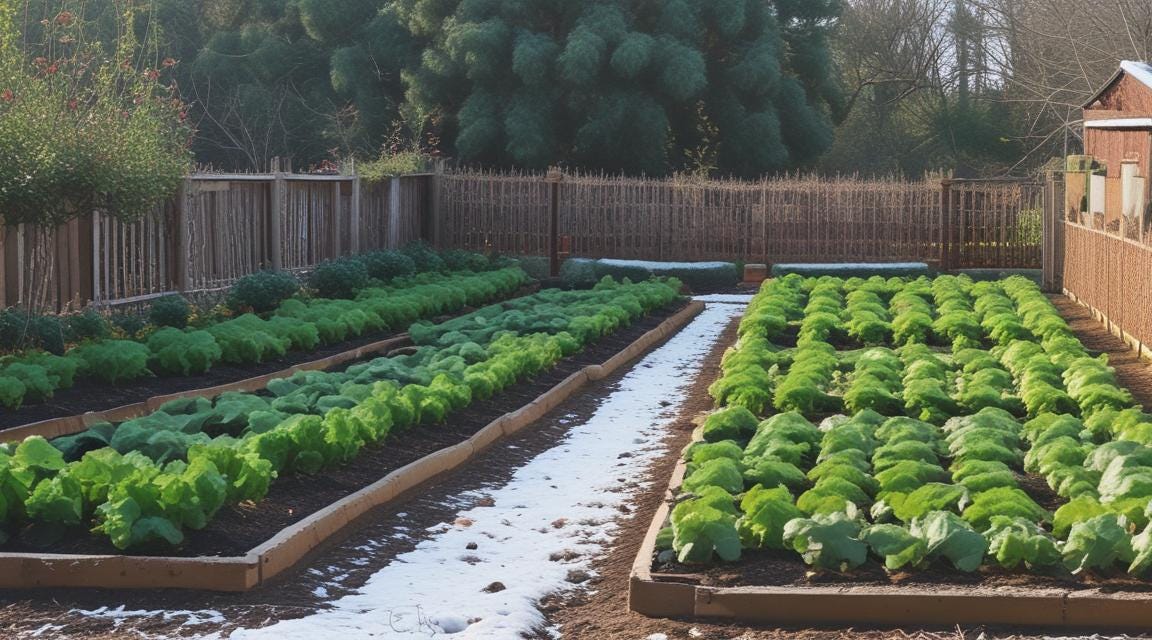Prepare Your Vegetable Garden for Winter: 10 Essential Steps
A Guide to Protecting and Strengthening Your Garden for the Cold Months Ahead
The days are getting shorter, and the trees are starting to shed their leaves—nature’s reminder that it's time to prepare your vegetable garden for winter. It may be tempting to close down your garden after the rush of spring planting and summer harvest, but there are plenty of good reasons to keep working on your vegetable garden year-round.
Do I Need to Prepare My Vegetable Garden for Winter?
All gardeners should take the time to prepare their vegetable gardens for winter. Depending on where you live, this could mean transitioning from summer vegetables to a winter crop. In colder climates, it involves clearing out your annual plants and taking steps to protect your perennials from winter frosts.
Whether you choose to shut things down or grow some winter veggies, there are several important steps to winterizing your vegetable garden.
10 Ways to Prepare Your Vegetable Garden for Winter
Proper winterization can save time and effort in the long run and set your garden up for success next spring. Follow these 10 simple steps to get started:
Clear Out Dead Plants: Remove dead or dying plants to prevent diseases and pests from overwintering. Use a bow rake to easily pull up plants, roots, and all.
Prepare Perennials: Cut back perennials to about six to eight inches after the first frost. Remove any frost-damaged leaves to prevent diseases.
Remove Weeds: Weeding in the offseason is easier than during the growing season and reduces the risk of weeds reappearing in the spring.
Prepare the Soil: Add compost, bone meal, or fertilizer in fall to enrich the soil for spring planting. Cover the soil with mulch or a plastic sheet to prevent nutrient loss from winter rains.
Plant Cover Crops: Sow cover crops like clover or winter rye to prevent soil erosion and improve soil quality.
Spread Compost: Add 2 to 6 inches of compost over your garden to protect and nourish the soil. Wait until after the first frost to avoid attracting rodents.
Prep Your Compost System: Use your summer compost to cover your garden and clear space for new materials. Add fall leaves to kickstart next year’s compost.
Replenish Mulch: Fresh mulch helps regulate soil temperature, reduces erosion, and protects winter crops from harsh weather.
Clean Your Tools: Clean, sharpen, and oil your garden tools to prevent rust and ensure they're ready for spring.
Plan for Next Year: Review how your crops performed this year and plan for improvements in the next growing season.
Following these steps will prepare your garden to weather the winter and thrive come spring!
Why You Should Prepare Your Vegetable Garden for Winter
While it’s tempting to leave your garden untouched until spring, here are five essential reasons to winterize your vegetable garden:
Clearing Space for Spring: Removing old plants and weeds in fall saves you time when it’s time to plant in spring.
Protecting Perennials: Winter prep helps perennials withstand the cold so they’re ready to grow again next season.
Preventing Disease and Pests: Clearing dead plants and prepping perennials reduces the risk of plant diseases and pests overwintering.
Reducing Tilling: Winterizing your garden with compost or mulch helps preserve soil moisture, reducing the need for tilling in spring.
Switching to Winter Vegetables: Preparing your garden opens space for winter-hardy vegetables, allowing you to grow crops year-round.
Thanks for reading The Art of Living! This post is public, so feel free to share it.
Vegetables That Can Survive Winter
Certain vegetables thrive in colder weather. Semi-hardy veggies like beets, celery, and spinach can survive mild winters, while hardy veggies such as cabbage, kale, and carrots can withstand temperatures as low as 20°F. Remove frost-intolerant crops like tomatoes and peppers and replace them with winter-hardy vegetables to keep your garden productive all year.
Wrapping It Up
Preparing your vegetable garden for winter is a valuable investment in the success of next year’s growing season. By clearing out old plants, protecting perennials, and enriching your soil, you set the stage for a thriving, productive garden when spring returns. Whether you’re transitioning to winter vegetables or simply safeguarding your soil for next year, these steps ensure your garden stays healthy and ready to bloom again.




